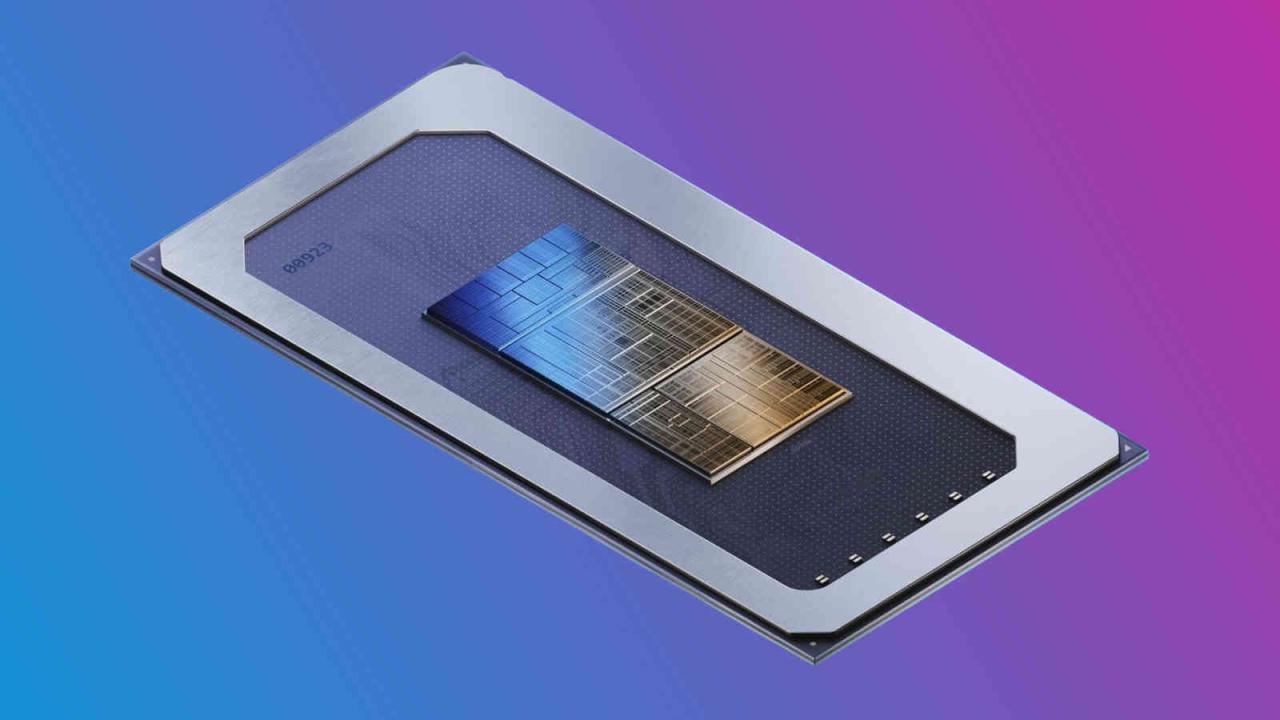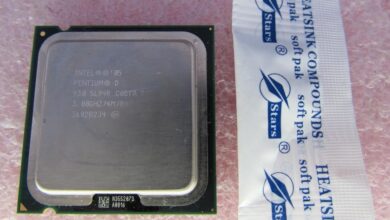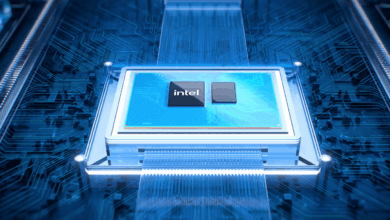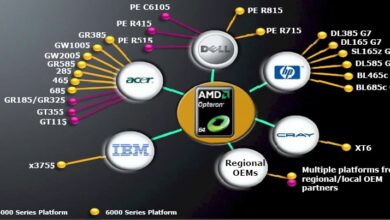Intel Pushes Desktop Power to Mobile
Intel pushes desktop power into new mobile processors, promising a future where the power of a desktop computer is accessible on your phone. This exciting development explores the historical context of mobile processor advancements, Intel’s strategic shift into the mobile market, and the potential impact on mobile computing. From the key technological breakthroughs that have powered faster processors to the architectural features enabling desktop-level performance, this article provides a comprehensive overview.
The article dives deep into the technical aspects, including cooling solutions, power management, and manufacturing processes. It examines the trade-offs between performance, power consumption, and heat dissipation. Moreover, it considers the implications for consumers, various industries (like gaming and content creation), and the potential emergence of new product categories.
Introduction to Mobile Processor Advancements
Mobile processors have undergone a dramatic transformation, evolving from relatively weak components to powerful engines capable of handling complex tasks previously confined to desktop computers. This evolution reflects a relentless pursuit of performance, efficiency, and innovative design. The journey has been marked by continuous improvements in architecture, fabrication techniques, and software optimization, culminating in the current state-of-the-art mobile processors.The historical trajectory of mobile processor performance has been one of exponential growth.
Early mobile processors were limited in their capabilities, primarily focused on basic tasks like phone calls and text messaging. Over time, the demand for more powerful devices capable of running demanding applications, gaming, and multimedia content has pushed developers to create more powerful processors. This trend continues today, as mobile devices are increasingly used for work, entertainment, and creative endeavors.
Historical Trajectory of Mobile Processor Performance
The initial mobile processors were simple designs, relying on a single core and limited processing power. This was sufficient for basic functionalities but fell short of modern demands. Successive generations saw the introduction of multi-core architectures, increasing clock speeds, and improved graphics processing units (GPUs). These advancements were driven by innovations in semiconductor fabrication, allowing for smaller transistors and denser circuits.
Key Technological Breakthroughs
Several key technological breakthroughs have enabled the increasing power of mobile processors. Advanced fabrication processes, such as FinFET and 3nm node technology, have significantly reduced transistor size, leading to increased transistor density on a chip. This increase in density allows for more transistors to be packed into a smaller space, resulting in improved performance and efficiency. Improved architectures, including the introduction of multi-core processors and specialized processing units for graphics and machine learning, have also played a crucial role.
Sophisticated power management techniques have enabled longer battery life without compromising performance. These factors have allowed for a dramatic shift in mobile computing capabilities.
Current State of the Art in Mobile Processor Design
Current mobile processor designs leverage a combination of advanced architectures, cutting-edge fabrication techniques, and innovative software optimization. Multi-core designs with specialized cores for specific tasks, like AI acceleration, are becoming increasingly common. Sophisticated power management schemes ensure that devices operate at optimal efficiency without overheating. Advanced GPU capabilities enable high-quality graphics and smooth performance in demanding games and applications.
The trend toward integrated hardware solutions for various tasks is continuing.
Examples of the Most Powerful Mobile Processors
Several leading smartphone manufacturers produce powerful mobile processors, including Apple’s A-series chips and Qualcomm’s Snapdragon series. These processors are constantly being refined and improved, pushing the boundaries of mobile computing. Examples of high-end processors include the Apple A16 Bionic and the Qualcomm Snapdragon 8 Gen 2.
Key Specifications of Leading Mobile Processors
| Processor | Cores | Clock Speed (GHz) | GPU Capabilities |
|---|---|---|---|
| Apple A16 Bionic | 6 Core CPU | 3.5 GHz | Powerful GPU with advanced graphics rendering capabilities |
| Qualcomm Snapdragon 8 Gen 2 | 8 Core CPU | 3.2 GHz | High-performance GPU optimized for demanding games and applications |
| Samsung Exynos 2200 | 8 Core CPU | 2.9 GHz | Strong GPU with capabilities for intensive tasks |
| MediaTek Dimensity 9000 | 8 Core CPU | 3.0 GHz | Advanced GPU with high-end graphics processing |
Intel’s Transition to Mobile Processors

Intel, historically known for its dominance in the desktop processor market, has embarked on a significant strategic shift to compete in the mobile processor arena. This transition reflects a broader industry trend toward increasingly powerful mobile devices, and a recognition that Intel’s legacy of technological prowess can be leveraged in this space. The challenge lies in overcoming the established dominance of ARM-based processors in mobile devices.Intel’s entry into the mobile processor market is a response to the growing demand for powerful computing capabilities in smartphones, tablets, and other portable devices.
This shift is not without its hurdles, and Intel’s success will depend on their ability to develop processors that can match or surpass the performance of their competitors, while addressing the specific needs and constraints of mobile devices. The pursuit of this ambitious goal necessitates a profound understanding of the mobile landscape, including the architectural differences and the unique power consumption requirements of these devices.
Intel’s Strategic Shift
Intel’s strategic shift into the mobile processor market involves a multi-pronged approach, focusing on developing innovative architectures and optimizing for power efficiency. They are actively targeting high-performance segments, recognizing that certain mobile users desire the same computational power and capabilities they’ve come to expect from desktop PCs.
Challenges in the Mobile Market
Intel faced numerous challenges in entering the competitive mobile processor market. ARM-based processors had already established a strong foothold, benefiting from decades of experience in optimizing for mobile devices. Moreover, the highly competitive nature of the mobile industry demands constant innovation and rapid adaptation to evolving technological standards. Another critical challenge was adapting to the stringent power consumption requirements of mobile devices.
Intel’s processors, traditionally optimized for desktop use, needed to be re-engineered to operate efficiently with limited power resources. Overcoming these challenges required significant investment in research and development, and a deep understanding of the unique constraints of mobile hardware.
Developing Competitive Mobile Processors
Intel’s approach to developing mobile processors that can match or exceed the performance of competitors involves several key strategies. Firstly, they are focusing on creating innovative architectures tailored for mobile applications. This includes optimizing the design for power efficiency, thermal management, and seamless integration with existing mobile device ecosystems. Secondly, they are leveraging their existing expertise in high-performance computing to develop processors with comparable performance to their desktop counterparts.
This approach is crucial to addressing the needs of users who require powerful computing capabilities in their mobile devices.
Comparison with ARM-based Processors
Intel’s mobile processor architecture differs significantly from ARM-based processors. ARM processors typically prioritize power efficiency and low latency, while Intel processors are known for their high core count and parallel processing capabilities. This difference necessitates a fundamental shift in design philosophy for Intel to compete effectively.
Intel’s pushing desktop-level power into new mobile processors is pretty impressive. It’s a fascinating leap forward, and reminds me of the upcoming showdown between a grandmaster and a computer in the final match, grandmaster and computer to battle in final match. This new tech promises to revolutionize mobile gaming and productivity, bringing a whole new level of performance to our pockets.
Ultimately, it’s a thrilling development for the future of mobile computing.
Key Features and Performance Metrics of Intel’s Mobile Processors
| Feature | Description | Performance Metric (Example) |
|---|---|---|
| Architecture | Specific microarchitecture used (e.g., Tiger Lake) | Higher clock speed or improved IPC |
| Core Count | Number of processing cores | 8 cores |
| Integrated Graphics | Graphics processing unit integrated onto the chip | High frame rate in mobile games |
| Power Consumption | Energy used by the processor | Lower TDP (Thermal Design Power) |
| Memory Support | Types of RAM supported | DDR5 |
| Performance Benchmarks (e.g., Geekbench) | Comparison to other mobile processors | Scores in the top 20% |
“Intel’s success in the mobile market hinges on its ability to offer a competitive product line that addresses the needs of a diverse user base.”
Desktop-Level Performance in Mobile Devices
The relentless pursuit of enhanced mobile computing experiences has led to a significant advancement in processor technology. We’re now seeing a blurring of the lines between desktop and mobile performance, with mobile processors increasingly capable of tasks traditionally associated with desktop machines. This trend is driven by the demand for more powerful mobile devices capable of handling demanding applications and workloads.This shift represents a paradigm shift in mobile computing, demanding higher levels of performance and capabilities.
The key is not just raw speed, but also the intricate balance of power efficiency, thermal management, and innovative architectural design to deliver desktop-level performance in a portable package.
Key Performance Metrics Distinguishing Desktop and Mobile Power
Mobile processors are designed for portability and power efficiency, often sacrificing raw processing power for reduced energy consumption. Desktop processors, on the other hand, prioritize raw performance. Crucial distinctions lie in clock speeds, core counts, cache sizes, and integrated graphics capabilities. Higher clock speeds translate to faster execution, more cores enable parallel processing, and larger caches reduce data retrieval times.
Desktop processors often boast significantly higher numbers in these metrics, leading to a performance gap compared to mobile processors.
Potential Benefits and Drawbacks of Desktop-Level Performance
Achieving desktop-level performance in mobile devices offers numerous advantages. Users can run resource-intensive applications, such as video editing software, 3D modeling programs, or complex simulations, without noticeable performance bottlenecks. This translates to increased productivity and creative freedom for mobile professionals. However, there are drawbacks. Enhanced performance typically comes at the cost of increased battery consumption.
Portable devices with desktop-level performance may need longer charging times or smaller battery capacities. Furthermore, the thermal management of such powerful processors can become a significant challenge, potentially leading to overheating and reduced device lifespan if not properly addressed.
Technologies Used to Achieve Desktop-Level Performance
Several technologies are employed to achieve desktop-level performance in mobile devices, pushing the boundaries of mobile processor design. Advanced microarchitecture, such as heterogeneous core designs (combining high-performance cores with energy-efficient cores), allows for a more balanced approach. Sophisticated power management systems are essential to ensure that the processor operates efficiently while maintaining high performance. Additionally, cutting-edge fabrication processes enable the creation of more compact and energy-efficient transistors, increasing the processing power while reducing power consumption.
Intel’s pushing desktop-level power into new mobile processors is pretty impressive, but it’s worth noting that the tech world isn’t just about raw processing power. For example, palm is expected to regain the European market lead in Q4, palm expected to regain euro lead in q4 , showing how other factors like brand recognition and consumer preference can still play a huge role.
Ultimately, Intel’s move into mobile power suggests a fascinating interplay between raw hardware capabilities and the overall market dynamics.
Furthermore, specialized thermal solutions are critical to manage the heat generated by high-performance components.
Examples of Tasks with Desktop-Level Power
Mobile devices with desktop-level performance can handle a wide array of demanding tasks previously confined to desktop computers. Rendering high-resolution images and videos, running complex simulations for scientific research, or editing large video files become significantly faster and more convenient. Professionals in fields such as graphic design, video production, and scientific research can now leverage the power of mobile devices for tasks that previously required desktop setups.
Furthermore, gaming experiences can be significantly enhanced, allowing for more complex and graphically demanding games to be played on mobile platforms.
Impact on Mobile Computing
Intel’s foray into high-performance mobile processors promises a significant shift in the mobile computing landscape. This leap in processing power, previously a domain of desktops, could dramatically alter how we interact with our devices, opening up entirely new avenues for mobile applications and experiences. The potential to run complex tasks and demanding software directly on mobile devices is a game-changer.The implications of this advancement extend far beyond simply faster speeds.
Intel’s pushing desktop-level power into their new mobile processors is seriously impressive. It’s a game-changer, and frankly, a little mind-blowing. This new technology could really revolutionize how we use our laptops. Speaking of impressive tech, did you know that Open Park launched free WiFi on Capitol Hill ? That’s a huge win for the community.
Regardless, Intel’s mobile processor advancements are definitely something to keep an eye on.
It suggests a future where mobile devices are not just tools for communication, but powerful platforms for creativity, productivity, and entertainment. Users can expect more fluid and responsive interfaces, enhanced graphics capabilities, and the ability to tackle computationally intensive tasks like video editing or complex simulations directly on their phones and tablets.
Potential Evolution of Mobile Devices
The enhanced processing power of Intel’s mobile processors will likely spur the development of more sophisticated mobile devices. Expect to see increased screen sizes, improved battery life, and innovative form factors that leverage the capabilities of these powerful processors. We might see the emergence of specialized mobile devices catering to specific needs, such as advanced gaming phones or portable workstations for professionals.
The convergence of mobile and desktop functionality will likely accelerate, leading to more powerful hybrid devices capable of handling tasks previously confined to desktops.
New Applications Enabled by Increased Processing Power
This surge in mobile processing power will unlock a new era of applications. Mobile gaming experiences could become significantly more immersive, with graphically demanding titles becoming a reality on smartphones and tablets. The development of sophisticated mobile-based design and editing software will become feasible, transforming how professionals in creative fields work. Advanced mobile applications for scientific research, engineering simulations, and educational tools will also gain traction.
Comparison with Competitors
| Feature | Intel Mobile Processors | Apple Silicon | Qualcomm Snapdragon |
|---|---|---|---|
| Processing Power | High, potentially exceeding existing mobile benchmarks, capable of handling complex tasks. | High, known for efficiency and performance in specific workloads, especially in Apple’s ecosystem. | High, but often focused on balanced performance and power efficiency. |
| Software Compatibility | Potentially broader compatibility with existing desktop software through emulation or optimized versions. | Excellent compatibility within Apple’s ecosystem due to integrated design. | Generally good compatibility with Android ecosystem. |
| Power Efficiency | A key area of focus for Intel, aiming to improve battery life alongside performance. | Generally highly efficient, prioritizing battery life in many scenarios. | Generally good power efficiency, but often trade-off with raw processing power. |
| Future Potential | Significant potential to redefine mobile computing by bringing desktop-level performance to mobile. | Continued innovation in Apple’s ecosystem, with a strong focus on integration. | Continued evolution with new chipsets, likely focusing on balance between performance and power efficiency. |
This table provides a basic comparison. Specific performance figures and actual impacts will depend on specific hardware implementations and software optimizations.
User Interaction with Mobile Devices
The increased processing power will significantly change how users interact with mobile devices. Imagine seamlessly transitioning between tasks, from editing a video to browsing the web, without noticeable performance lag. The responsiveness of mobile interfaces will improve dramatically, creating a more fluid and intuitive user experience. The user’s perception of the device will shift from a tool to a powerful, versatile platform, capable of handling a range of complex tasks.
Technical Aspects of the Mobile Processors: Intel Pushes Desktop Power Into New Mobile Processors
Intel’s foray into the mobile processor market, aiming for desktop-level performance, necessitates a deep dive into the technical intricacies. These processors must balance raw power with the constraints of limited space and battery life. The architectural innovations, cooling mechanisms, and manufacturing processes all play crucial roles in achieving this ambitious goal.
Architectural Features Enabling Desktop-Level Performance
Intel’s mobile processors, striving for desktop-level performance, leverage advanced microarchitectures. Key features include optimized instruction pipelines, enhanced cache hierarchies, and improved branch prediction algorithms. These features collectively reduce latency and increase throughput, allowing for complex tasks to execute efficiently. For instance, advanced vector instructions, similar to those found in desktop processors, accelerate tasks like image processing and video encoding.
Cooling and Power Management Solutions
Mobile processors, unlike their desktop counterparts, operate under tighter thermal and power constraints. Sophisticated cooling solutions are critical. These include advanced thermal designs, such as optimized heat sinks and improved thermal interface materials, which are meticulously engineered to minimize heat dissipation. Power management is equally important. Dynamic voltage and frequency scaling (DVFS) automatically adjusts processor power and speed based on the workload.
This strategy minimizes energy consumption when not under heavy load, preserving battery life while still achieving desired performance levels.
Trade-offs Between Performance, Power Consumption, and Heat Dissipation
Optimizing mobile processors involves navigating complex trade-offs. Higher performance often translates to increased power consumption and heat generation. Designers must carefully evaluate the impact of various architectural choices on these three factors. For example, increasing the clock speed of a processor may boost performance but also dramatically increase power consumption and heat dissipation. Finding the optimal balance between these factors is crucial for creating efficient mobile processors.
This often involves iterative design and testing, aiming for a “sweet spot” that delivers desired performance without excessive power consumption.
Manufacturing Processes
The manufacturing process is critical in determining the efficiency and cost-effectiveness of these mobile processors. Intel utilizes advanced semiconductor manufacturing processes, such as FinFET transistors, to achieve higher transistor density and better performance per unit area. The use of these advanced manufacturing processes enables smaller, faster, and more energy-efficient transistors. These advancements reduce the size and power consumption of the entire chip, leading to a more compact and energy-efficient processor.
Key Technical Specifications of Different Processor Generations
| Processor Generation | Architecture | Clock Speed (GHz) | Cores | Cache (MB) | Power Consumption (Watts) |
|---|---|---|---|---|---|
| Alder Lake Mobile | Raptor Lake | Up to 5.0 | 14 | 20 | 15-30 |
| Raptor Lake Mobile | Raptor Lake | Up to 5.5 | 16 | 24 | 10-25 |
| Previous Generation | Alder Lake | Up to 4.5 | 12 | 16 | 18-35 |
The table above highlights the key technical specifications for various Intel mobile processor generations. Each generation represents advancements in architectural design, resulting in increased clock speeds, higher core counts, improved cache sizes, and often reduced power consumption. These improvements illustrate the ongoing evolution and refinement of mobile processor technology.
Implications for Consumers and Industries
The leap to desktop-level performance in mobile processors isn’t just a technological advancement; it’s a paradigm shift. Consumers will experience a dramatic improvement in their daily tasks, and entire industries will be reshaped by the ability to perform complex operations previously confined to desktops. This new era of mobile computing promises unprecedented possibilities.This enhanced power unlocks new potential for applications, enabling users to experience a desktop-like workflow on their mobile devices.
The impact on various industries, from gaming to content creation, is profound and transformative. We’ll explore how these advancements translate into tangible benefits for users and the businesses that rely on mobile technology.
Consumer Benefits
The increased processing power translates to a more responsive and efficient mobile experience. Users will see faster loading times for applications, smoother transitions between tasks, and improved performance in demanding applications. This boost in performance will enhance productivity and engagement in a multitude of tasks, from editing videos to playing high-resolution games. The improved performance will make mobile devices more akin to desktop computers, blurring the lines between the two and making mobile computing even more powerful and versatile.
Impact on Industries
The rise of mobile processing power with desktop-level capabilities has significant implications for several industries.
- Gaming: The ability to run graphically intensive games on mobile devices opens up new avenues for gaming experiences. Expect more realistic graphics, smoother gameplay, and complex storylines that were previously impossible on mobile devices. The rise of cloud gaming services will be further propelled, as users can access games with demanding graphical requirements.
- Content Creation: Mobile devices become powerful tools for content creation. Video editing, image manipulation, and audio production can be accomplished with the same level of precision as on desktop computers. This will enable creators to produce high-quality content anywhere, anytime, revolutionizing how we consume and create media.
- Professional Applications: Professionals in various fields can now use their mobile devices for more demanding tasks. Designers, engineers, and researchers can perform complex calculations and simulations on their mobile devices, streamlining workflows and increasing productivity.
New Product Categories
This advancement in mobile processing power is poised to create new product categories and reshape existing ones. Expect to see new types of mobile workstations, enhanced productivity apps, and the emergence of entirely new creative tools. The ability to perform complex tasks on mobile devices will create new business opportunities.
Software and Application Leverage, Intel pushes desktop power into new mobile processors
The increased processing power enables a wider range of software and applications to be optimized for mobile devices. Software developers can now build applications with more complex features and functions, pushing the boundaries of what’s possible on a mobile device. Existing software applications will also benefit from the enhanced processing power, resulting in improved performance and a richer user experience.
Applications and Tasks
This table highlights applications and tasks suitable for desktop-level performance on mobile devices:
| Application/Task | Suitable for Desktop-Level Performance on Mobile? |
|---|---|
| Photo and Video Editing (high resolution) | Yes |
| 3D Modeling and Animation | Yes, with limitations |
| CAD Design | Yes, with limitations |
| Video Conferencing (high-definition) | Yes |
| Data Analysis and Visualization | Yes |
| Virtual Reality/Augmented Reality | Yes |
Future Trends and Challenges
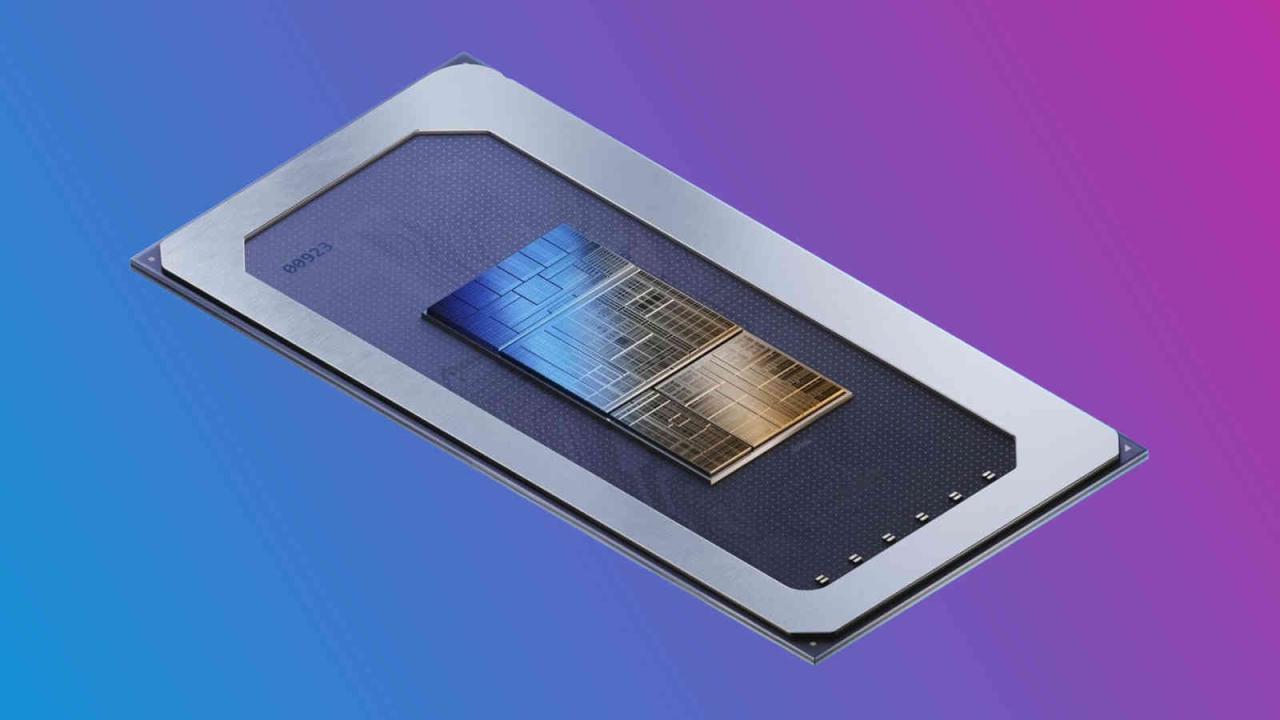
The relentless pursuit of desktop-level performance in mobile devices is pushing the boundaries of semiconductor technology. This quest for power, efficiency, and portability is leading to exciting advancements, but also presents significant hurdles. We’ll explore potential breakthroughs, ongoing challenges, and the broader impact this will have on the computing landscape.The mobile processor landscape is rapidly evolving, with Intel’s foray into the mobile arena marking a significant shift.
The convergence of mobile and desktop computing demands innovative solutions to balance power, size, and battery life. This evolution will continue to reshape the way we interact with technology, affecting everything from personal computing to enterprise applications.
Potential Breakthroughs in Mobile Processor Technology
The drive for miniaturization and enhanced performance in mobile processors necessitates advancements in several key areas. One potential breakthrough is the development of new materials with superior thermal conductivity, enabling more efficient heat dissipation in smaller devices. This would allow for higher clock speeds and sustained performance without compromising battery life. Furthermore, improvements in power management techniques, like dynamic voltage and frequency scaling, could further optimize energy consumption.
Integration of advanced AI-driven power management systems will be crucial for achieving peak performance in varying workloads, a key factor in achieving desktop-level power in a mobile format.
Limitations in Achieving Desktop-Level Power in Mobile Devices
While significant progress is being made, several limitations hinder the complete realization of desktop-level performance in mobile devices. The primary challenge is the inherent physical constraints of a portable form factor. Miniaturizing components while maintaining high processing power creates thermal limitations. Battery life remains a significant obstacle, as high-performance processors consume substantial power. Developing innovative cooling solutions and power management techniques are essential to address these limitations.
The complex integration of multiple components into a compact mobile device also presents considerable engineering hurdles. A perfect balance between processing power, energy efficiency, and size will be crucial for future advancements.
Ongoing Research and Development Efforts
Numerous research and development efforts are focused on overcoming the challenges associated with achieving desktop-level power in mobile devices. Intel, for example, is investing heavily in research for 3D chip stacking, which promises to increase processing power by integrating multiple components on a single chip. Other companies are exploring novel architectures, like heterogeneous integration, combining specialized processors with standard CPU cores for optimal performance in different workloads.
Moreover, the development of advanced packaging techniques, including the use of advanced materials and designs, is vital for reducing heat generation and enabling greater integration.
Impact on the Overall Computing Landscape
The advancement of mobile processors with desktop-level performance will have a profound impact on the overall computing landscape. Increased portability and power will drive the adoption of mobile devices for tasks previously confined to desktops, like video editing, 3D modeling, and complex data analysis. This will lead to a blurring of lines between personal and professional computing, fostering a more interconnected and versatile digital environment.
Future Implications for Mobile Computing
The future of mobile computing hinges on the ability to deliver desktop-level performance in a portable form factor. This advancement will likely lead to a wider range of mobile applications, new industry sectors emerging, and a shift in consumer expectations. The impact on the computing landscape will be transformative, with potential breakthroughs in mobile gaming, augmented reality, and virtual reality experiences.
The continued evolution of mobile processors will profoundly reshape the way we work, learn, and interact with technology.
Last Recap
Intel’s foray into powerful mobile processors is a significant step forward in mobile computing. The potential to bring desktop-level performance to mobile devices opens up exciting possibilities, from enhanced gaming experiences to more robust content creation tools. However, the challenges of maintaining power efficiency and heat management in a compact mobile form factor are also significant. The future of mobile computing is undoubtedly bright with this innovation.

